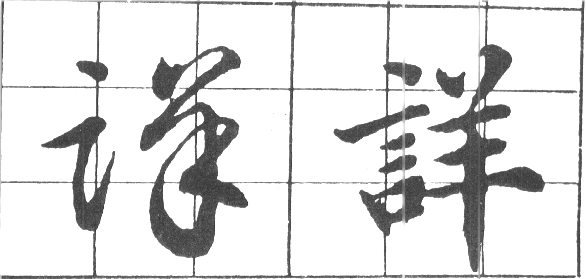The complex characters in the kaishu or regular script, are composed using many number of penstrokes per character. With the brushpen, the calligrapher can eliminate many strokes by merging components into representative lines, curves and dots. Compare 详 with 詳 in the following illustration from a calligraphy primer.

A homophonous character is used for another character, where both have different meanings. We therefore have a character which has more than one semantic meaning, which can only be distinguished in simplified Chinese text from the context.
The first character 后 means a 'queen', whilst the latter, 後 means 'back of, later, after'. In the simplified form, 后 this character takes on both meanings. The use of the simplified form to mean 'after, also has historical precedence, because it has been used in published works long before there was any standardisation of simplifications.
Characters sharing common components which can be simplified take the simplified component.
All the characters 臺檯枱颱 simplify to the character 台. It is overloaded with several meanings, and the simplifications of the character 臺 to 台 provides a route whereby other characters containing the same component can be converted in a similar fashion, as shown by 檯枱.
The merging of 颱 with 台 is based upon homophony, in fact, all five hanzi have the reading of tai2. 颱 is used only in a bound morpheme, 颱風, therefore, 台風 is distinguishable in writing by context.
The originally word 台 was used in polite address to another person, which is why there is an association with the mouth radical, 口.
The writing reform group proposed newly created characters also which have no historical precedence in the regular script form. They are derived from rationalising calligraphic forms. For instance,
The complex forms of 专, 岁 and 罗 are 專, 歳 and 羅 respectively. The simplified forms are therefore rationalisations. Note also that 岁 does not even contain any portion which resembles 歳. Further, though 岁 and 罗 have the same component in the lower portion of their respective characters, their complex forms 歳 and 羅 have few if any common components which are similar.